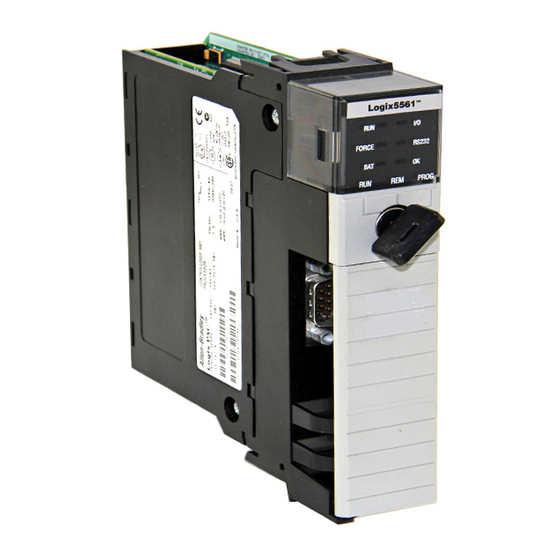
Summarization of Contents
Preface
Studio 5000 Engineering and Design Environment and Logix Designer Application
Introduces the Studio 5000 environment and Logix Designer application for programming.
Purpose of This Manual
Outlines the manual's focus on I/O and tag data in Logix5000 controllers.
Communicate with I/O Modules
Introduction
Explains adding I/O modules to the controller's I/O Configuration folder.
Requested Packet Interval (RPI)
Defines RPI and its role in I/O data updates between controllers and modules.
Communication Format
Details how communication format affects tag data structure and connection types.
Electronic Keying
Describes how electronic keying verifies module compatibility before communication.
Address I/O Data
Explains the format and structure of I/O addresses in Logix5000.
Buffer I/O
Discusses using buffer I/O to manage data changes during program execution.
Organizing Tags
Introduction
Introduces tags as alphanumeric names for addressing data (variables) in Logix5000.
Data Type
Defines data types and lists common types for tag storage.
Scope
Explains controller (global) and program (local) tag scopes for data organization.
Create a Tag
Provides steps for creating new tags using the Tag Editor.
Creating a User-defined Data Type
Guides on creating custom data structures (UDTs) for complex data organization.
Force I/O
Introduction
Explains using forces to override logic for testing and temporary process control.
Precautions
Highlights critical safety warnings and considerations when using forces.
Disable or Remove a Force
Describes procedures for stopping or removing forces from the controller.
Enable Forces
Details the process of enabling I/O and SFC forces at the controller level.
Data Access Control
Introduction
Introduces tag attributes for controlling access to tag data.
External Access
Explains how to control external application access to tags (Read/Write, Read Only, None).
Configure Constant Tags
Details how to designate tags as constants to protect them from programmatic changes.














Need help?
Do you have a question about the 1768-L45 CompactLogix 5345 and is the answer not in the manual?
Questions and answers